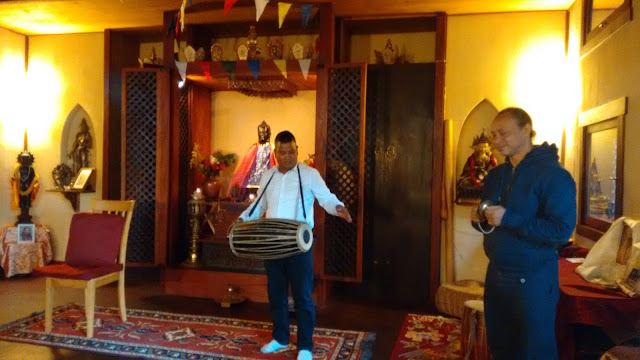In terms of economic development, Nepal may be an LDC or a least developed country, but the tiny Himalayan nation is rich in arts, traditions, culture and mediaeval architecture, and more so in traditional music and musical instruments.
In the past, hundreds of musical instruments were in vogue in Nepal. Those musical instruments which were the integral part of the Newah life were used and practiced during different festivals and rituals. According to a research, there were about 200 original instruments used and practiced in Nepal in the past and only 108 of them are still in use. It is so painful to note that many of the musical instruments have already disappeared owing to the neglect of the state.
Nevertheless, the fact that Newah culture is rich in traditional music is proved by use of numerous musical instruments, such as, Payntah (a long trumpet), Dhimay (a huge double sided drum), Dhaa (a double sided drum), Khin (also a double sided drum), Taa (a small cymbal), Bhusya (a large cymbal) and the list goes on.
Meanwhile, a Khin (double sided drum) presentation was organized at the Nritya Mandala Mahavihara in Portland on Saturday April 20, 2019. The Khin was played by artist Amir Raj Maharjan who is currently on a visit to the United States. About 50 Newah Portlanders and local Americans were present at the program.
Prajwal Bajracharya of the Nritya Mandala Mahavihara expressed the view that Newah Portlanders could take advantage by learning about Khin and listening to it.
Speaking on the occasion, musician Maharjan said that a Khin is a classical membranophone widely and popularly played during the Bhajans and different festivals. Giving a brief introduction of Khin, Maharjan said that a Khin is made of a wooden trunk with thin animal skins covering both sides.
In his words, the right side of the Khin is covered with cow skin and left side with goat skin, having a black tuning paste called Khau attached in both sides. On the occasion, Maharjan also presented a popular Newah folk song "Rajamati". No doubt, the traditional popular folk song like "Rajamati" is a part of rich Newah cultural heritage.
Quintessentially, the Newahs have a huge legacy and heritage of traditional and classical music and dances. The music and musical instruments of any ethnic community are reflected in the way of living and lifestyle of the particular ethnic community. Rich Newah music and musical instruments are testimony to the magnificent Newah culture.
(Rabin Man Shakya is a Nepali journalist in America)







No comments:
Post a Comment